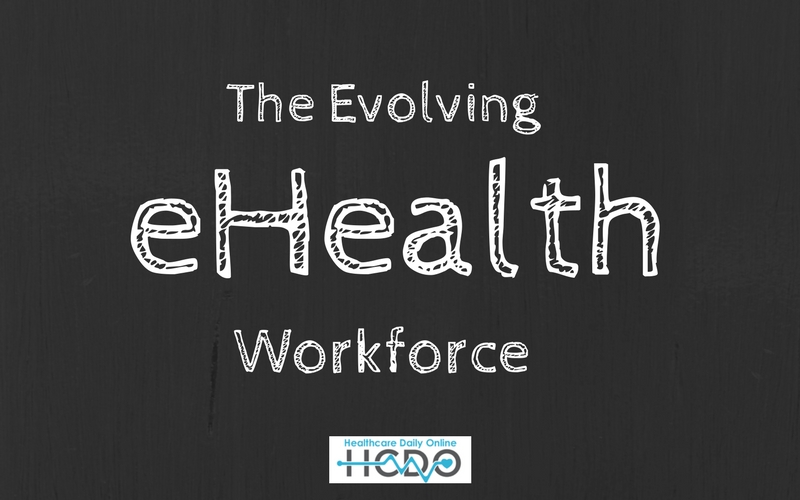 The healthcare industry faces a talent shortage that is set to get worse as members of the Baby Boomer generation reach retirement age. From nurses to physicians to eHealth specialists, finding people ready and able to meet the labor needs of the industry is not getting easier.
The healthcare industry faces a talent shortage that is set to get worse as members of the Baby Boomer generation reach retirement age. From nurses to physicians to eHealth specialists, finding people ready and able to meet the labor needs of the industry is not getting easier.
Health Information and Technology (IT) is not immune. According to the 2017 HIMSS Leadership and Workforce Survey, 38% of healthcare providers say they are fully staffed to meet their health IT needs. At the time of the survey, 43% said they had vacant positions they were looking to fill and 56% were expecting IT budget increases in the coming years.
While there are plenty of IT workers in the job market, many of them lack the healthcare experience to be effective in a sector that requires a base knowledge of medical settings and terminology.

On the other hand, many healthcare workers lack the technical training necessary to transition into a more IT focused role.
“Too often we’re trained with blinders on, we’re training a nurse to be a nurse,” said Rachelle Blake, CEO and Managing Director of Omni Micro Systems and Med Solutions. “The nurse will continue down the nurse’s path, and too often we’re not looking at how the interdisciplinary component is present within each role in today’s world.
“We work in teams and collaborate, especially in healthcare. This is a very collaborative time and our electronic tools mandate that we have team-based, collaborative workplaces. Interdisciplinary study is something we need to start teaching from the very beginning, at the competency level.”
In response to the need for better eHealth training across the spectrum of healthcare roles, Blake’s Omni Micro, HIMSS North America, European innovation advisor Steinbeis 2i GmbH and universities from around Europe are stepping up to provide a much-needed asset. Together, these organizations have created a foundational curriculum for the development of the eHealth workforce as part of the EU*US eHealth Work Project, a Horizon 2020 Project funded by the European Commission.
The curriculum encompasses more than 1,000 “competencies,” which are defined as “the combination of observable and measurable abilities, skills and attributes that contribute to aggregated knowledge, job performance and ultimately organizational success,” according to HITComp.org, a cross-discipline training tool created and managed by Blake’s Omni Micro.
Training the Digital Health Workforce
The HITComp tool organizes competencies across five domains: research/biomedicine, informatics, administration, direct patient care and engineering/information systems. They then fall into an “area of competency,” such as general health IT knowledge or clinical workflows, population management, legal, privacy and security, etc. In all, there are around 40 areas of competency.
They can be filtered further, organized by the level of expertise required, which ranges from basic to expert. And finally, they can be assigned a “competency quadrant,” or the areas in which interactions around these competencies occur.
The HITComp tool is the result of a collaboration between the U.S. Office of the National Coordinator for Health IT, the European Commission and a special workforce development group that included Blake. Their mission was to develop a map for the tool. It is designed to explain the competencies one needs to possess to enter a given role within eHealth.
When the U.S. and EU entered into a memorandum of understanding for eHealth collaboration in 2010, the parties set out to look at workstreams necessary for the achievement of goals in areas such as interoperability, innovation and workforce development. The relationships among those three elements were examined through the lens of how they can help providers in the trans-Atlantic region.
“How do we map the work that’s been done, how do we look at competencies that are out there and what do we do with that?” Blake said, regarding the team’s mission. “We had a large list of competencies. We applied Bloom’s taxonomy to them and coupled them with roles from all over the healthcare spectrum, and it became useful for educators and managers to tailor their curriculum or create job descriptions. Then, we wanted to put them into an open source tool and repository and that became HITComp.”
Today, HITComp is used by departments of health, education and labor to see detailed job descriptions and what skills need to go along with those positions. With the launch of the foundational curriculum, Omni Micro and its partners are taking the next step toward creating a more prepared workforce, versed in eHealth in innovative ways.
“We are now taking those skills you need and coupling them with the education component,” Blake said. “Our discussions up to this point have been with ministries of health, the public-sector side and educators. We’ve not bridged the private sector side, but it’s something we want and need to do. We’d like to find resources to make those conversations happen as we approach the end of this project.”
The foundational curriculum is currently being reviewed by education partners and is set to be rolled out later this year, probably over the summer. At that point, Blake sees the mindset of those working on the project shifting toward longevity, or in other words, how do they keep the momentum of the foundational curriculum going. For that, private sector involvement and integration of educators is necessary.
“We have the foundational curriculum and now we want to move that to brick and mortar universities,” Blake said. “We’d like to see the curriculum in eHealth becoming not just an informatics introductory course, but we’d also like it to be a standalone course for medical, nursing and pharmacy schools. An interdisciplinary course to introduce those students to eHealth skills. It can be wrapped as informatics, but really it’s preparing interdisciplinary students with digital skills for healthcare.”
Curriculum Development & More
Having set a goal of developing workers armed with competencies that would allow them to get started in eHealth roles around the world, Omni Micro and its partners had to consider what those positions look like in various locations. Positions in the U.S. are different from the EU or Africa.
To attract a global audience, they had to understand the differences and nuances among health systems around the world.
That often meant searching for commonalities among systems. For example, the U.S. follows HIPAA for data security, while the EU is now rolling out the General Data Protection Regulation (GDPR). To avoid tying the curriculum to one specific geographic location, the curriculum is limited to the basics of what someone needs to know to be successful in maintaining data security. It presents principles and objectives of what a base-level student would need to know on their first day of work to perform their duties.
“We’re looking at everything that goes into eHealth competence,” Blake said. “We used the Office of the National Coordinator curriculum as a starting point and we wanted to expand on those 40 areas of competence. Things like documentation, clinical workflows, vendor systems, departmental systems versus enterprise wide systems, data provenance, informatics and so on. These are all part of an eHealth educational foundation.”
As the curriculum gains adoption, the goal is to have more localized modules that can be added to the foundational curriculum, integrating cultural nuances, common practices and varying levels of eHealth architecture that are specific to a given region.
The foundational curriculum and HITComp are both free for anyone to use. As a method of workforce development, this ensures that anyone interested can benefit from what’s offered, regardless of socioeconomic status. It also can feed informatics programs better prepared students and instructors.
“We hear a lot that informatics courses start at a high level, and a lot of times there’s inconsistencies regarding what type of curriculum informatics programs are presenting, depending on what part of the U.S. you are in,” Blake said. “When it comes to instructors, there’s a large disparity in terms of their preparation for being able to deliver these courses.
“One of the things we’ve worked on is instructor modules to help prepare instructors to deliver this material as well. Especially with the informatics programs, we want to help instructors to have mechanisms to be able to deliver content in a way that makes sense.”
The last piece was designing the curriculum to suit the needs of the modern learner. To do so, it had to fulfill a few basic requirements. It needed to:
- Be available online
- Integrate PowerPoint presentations
- Integrate video and graphic components
- Tie into social platforms where applicable
- Be properly vetted
There is an exam at the end of each unit that plays into the larger goal of the project, which is to provide competency-based credentialing.
“We wanted to make it speak to every type of learner and be inclusive as possible while making it modern and include social media,” Blake said. “We’ll be looking to make use of things like YouTube, and the courses themselves are very interactive. The course material is presented through exercises the student can participate in so they can apply the lessons learned in these units through various types of activity. We aren’t using systems for training such as something like Epic just yet, because we’ll want to customize those to regional curriculum. It’s vendor agnostic at this point.”









